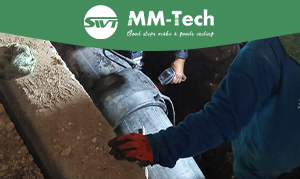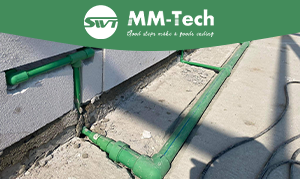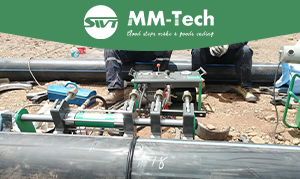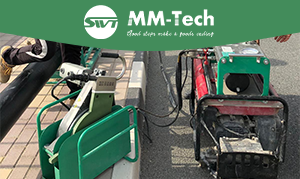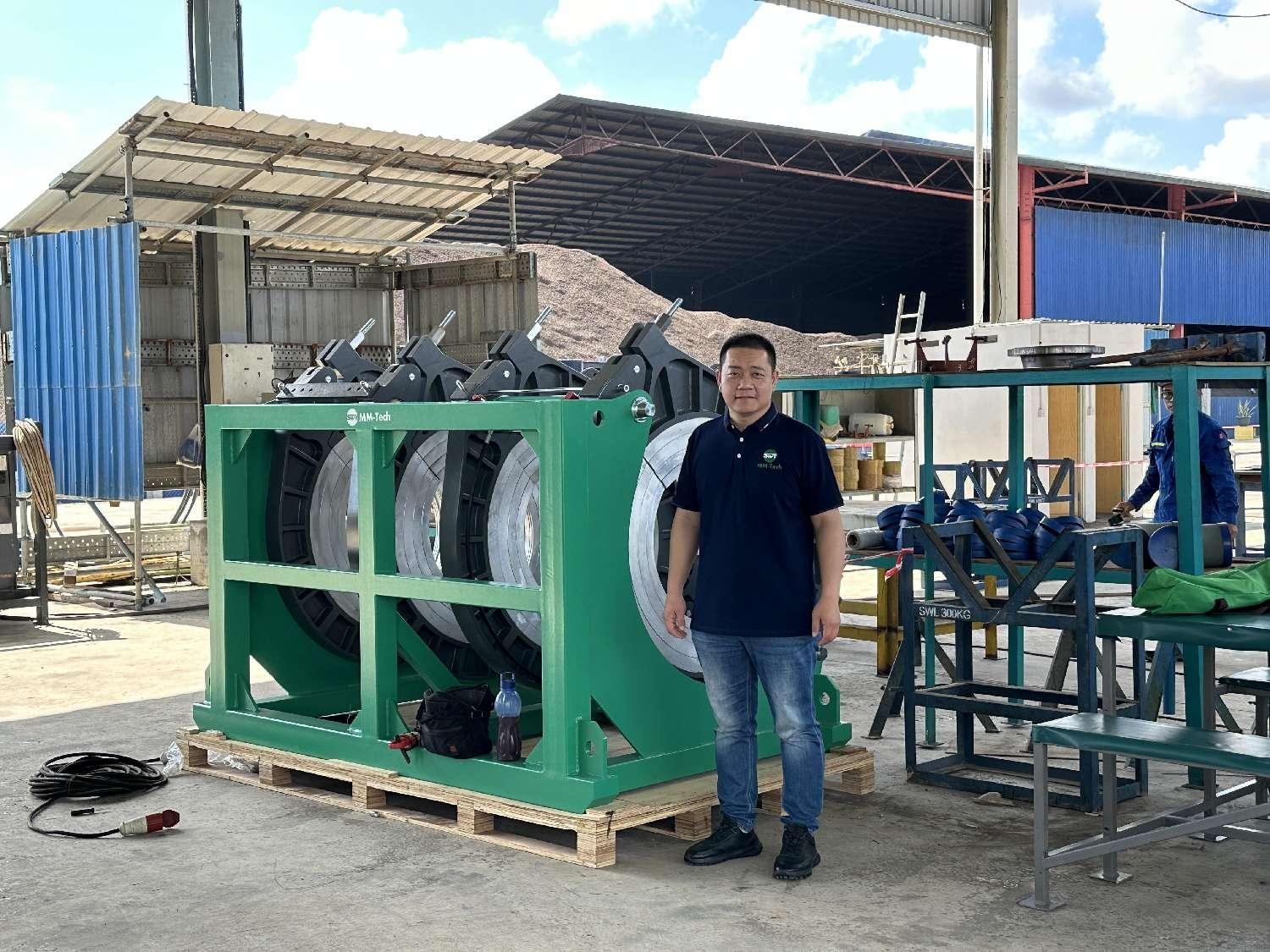The MM-Tech Electrofusion Machine revolutionizes HDPE pipe welding by ensuring precise and durable joints. You benefit from leak-proof connections that enhance pipeline longevity. Modern advancements, like real-time monitoring, boost reliability and precision, making this technology indispensable. Adopting proper procedures minimizes errors, offering long-term advantages such as reduced maintenance and improved pipeline safety.
Key Takeaways
Collect all tools needed before you start welding. You’ll need an Electrofusion Machine, pipe cutters, and cleaners for smooth work.
Check and clean HDPE pipes well before welding. This stops dirt that can weaken the weld and cause leaks.
Watch the welding process carefully. Use the machine’s screen to check voltage and current to keep it within the right limits.
Preparing for Electrofusion Welding
Tools and Equipment Checklist
Before starting the welding process, gather all necessary tools and equipment to ensure smooth operations. Essential items include an Electrofusion Machine, pipe cutters, rotary peelers, clamps, and specialized cleaning solutions. Each tool plays a critical role in achieving high-quality welds. For instance, rotary peelers simplify the removal of the pipe’s outer layer, ensuring precise wall thickness preparation.
Using a rotary peeler speeds up the process and reduces physical effort, especially for larger pipe dimensions like DN100.
Modern Electrofusion Machines, such as MM-Tech’s DPS20-3.5KW model, offer advanced features like bar code scanners for precise parameter settings and error alerts. These features enhance quality control and reduce the likelihood of mistakes.
Benefit | Description |
|---|---|
Speed | Electrofusion is faster than butt fusion, especially in tight spaces. |
Simplicity | The process is intuitive, reducing the likelihood of mistakes. |
Flexibility | Allows for connections between different material grades and wall thicknesses. |
Quality Control | Modern machines use bar code scanners for precise parameters and error alerts, ensuring high quality. |
Consistency in Preparation | Tools like rotary peelers ensure precise wall thickness removal, enhancing weld quality. |
Safety Precautions for Using an Electrofusion Machine
Safety is paramount when operating an Electrofusion Machine. Wear protective gloves and goggles to shield yourself from heat and sparks during the welding process. Ensure the machine operates within its specified voltage range to prevent electrical hazards.
Keep the workspace clean and free of flammable materials. Follow the manufacturer’s guidelines for setup and operation to avoid accidents. MM-Tech’s DPS20-3.5KW model includes features like harmonic output suppression and flexible cable protection, which enhance safety during use.
Inspecting and Cleaning HDPE Pipes
Proper inspection and cleaning of HDPE pipes are crucial for successful welding. Examine the pipe ends for cracks, deformities, or other damage that could compromise the weld. Use a rotary peeler to remove the outer layer of the pipe ends, exposing a clean surface for welding.
Thoroughly clean the welding zone with a specialized cleaner to eliminate dirt, grease, and debris. Impurities in the fusion zone weaken the weld and increase the risk of leaks.
Dirt and debris entering the fusion zone compromise the welding process.
Ensure both pipe ends are properly cleaned before proceeding.
By following these steps, you create a solid foundation for a durable and leak-proof connection.
Step-by-Step Guide to Using the MM-Tech Electrofusion Machine
Setting Up the Electrofusion Machine
Proper setup is the foundation of successful welding. Start by ensuring the Electrofusion Machine is in good working condition. Check the power supply and confirm that the voltage matches the machine’s requirements. Inspect the cables and connectors for any signs of wear or damage. A well-maintained machine ensures consistent performance and minimizes the risk of errors.
Follow these essential steps for optimal setup:
Select the appropriate welding process based on the material type and application.
Verify the compatibility of the pipes and fittings to prevent defects.
Prepare the joint area by cleaning and removing any contaminants.
Set the welding parameters according to the pipe specifications.
Ensure the machine is calibrated and ready for operation.
Tip: MM-Tech’s DPS20-3.5KW model features a user-friendly LCD display that simplifies parameter setup, ensuring accuracy and efficiency.
Aligning and Clamping the Pipes
Alignment plays a critical role in achieving a strong weld. Use high-quality alignment clamps to hold the pipes securely. Ensure the pipe ends are flush and parallel before starting the welding process. Misalignment can lead to weak joints and uneven stress distribution, compromising the weld’s integrity.
Precision alignment tools help you avoid these issues. They ensure uniform contact between the pipe ends, reducing the risk of defects. Always inspect the alignment before proceeding to the next step.
Note: Proper clamping not only improves weld quality but also enhances safety during the process.
Programming the Machine for Welding
Programming the Electrofusion Machine correctly is crucial for achieving the desired weld characteristics. Input the welding parameters, such as voltage, current, and time, based on the pipe and fitting specifications. MM-Tech’s DPS20-3.5KW model supports bar code scanning, which automatically sets the parameters for you. This feature reduces the chances of human error and ensures consistent results.
Parameter | Description |
|---|---|
Voltage | Determines the heat generated during welding. |
Current | Controls the energy flow for fusion. |
Time | Ensures the proper duration for the welding process. |
Tip: Double-check the programmed settings before starting the weld to avoid errors.
Monitoring the Welding Process
During the welding process, keep a close eye on the machine’s display. MM-Tech’s Electrofusion Machine provides real-time updates on voltage, current, and remaining time. Monitoring these parameters ensures the process stays within the required specifications.
Look for any error messages or alerts on the display. Addressing issues immediately prevents defects and ensures a successful weld. Once the welding cycle is complete, allow the joint to cool naturally before handling it.
Reminder: Avoid interrupting the welding process, as this can compromise the joint’s strength and durability.
Post-Welding Best Practices
Cooling and Handling the Welded Joint
Proper cooling is essential to maintain the integrity of the welded joint. Allow the joint to cool naturally without applying external force or stress. Avoid moving or handling the pipes during this period, as it can weaken the bond and lead to defects.
Proper cooling systems help manage the heat generated during welding, preventing issues like warping or uneven welds.
Water-cooled electrodes are often used to dissipate heat efficiently, ensuring optimal temperatures and reducing the risk of incomplete fusion.
Once the joint has cooled, handle it carefully to avoid damaging the weld. Use appropriate lifting tools if the pipes are large or heavy. This ensures the joint remains intact and ready for inspection.
Tip: Never rush the cooling process. Patience ensures a stronger and more durable connection.
Inspecting the Weld for Quality
After cooling, inspect the weld to ensure it meets quality standards. Look for visible defects such as cracks, uneven surfaces, or discoloration. These signs may indicate improper fusion or contamination during the welding process.
Use a gauge or caliper to measure the weld bead’s width and height. Consistent dimensions across the joint indicate a successful weld. For advanced inspections, consider using ultrasonic testing or X-ray imaging to detect internal flaws.
Reminder: Regular inspections help identify potential issues early, saving time and resources in the long run.
Troubleshooting Common Issues
Even with proper preparation, welding issues can arise. Addressing them promptly ensures the joint’s reliability.
Porosity Prevention: Keep the workspace clean, use fresh welding consumables, and check equipment regularly to avoid contamination.
Crack Prevention: Maintain proper temperature and strain levels during welding. Ensure the correct width-to-depth ratio on weld beads.
Undercut Prevention: Check heat input, work at a manageable speed, and use the correct electrode angle and size.
Weld Design Considerations: Ensure the weld size and design support the intended load.
Procedure Adherence: Follow proper welding procedures, including preheating and controlling interpass temperature, to avoid hydrogen cracking.
Understanding common weld failures, such as poor design or inadequate procedures, helps maintain high-quality results. The Electrofusion Machine simplifies many of these processes, reducing the likelihood of errors and ensuring consistent performance.
Expert Tips for Perfect HDPE Pipe Welding
Avoiding Common Mistakes with an Electrofusion Machine
Mistakes during HDPE pipe welding can compromise the joint’s strength and durability. You can avoid these errors by following expert recommendations:
Clean the pipe surfaces thoroughly to remove contaminants before welding.
Use the correct equipment, including the right Electrofusion Machine and tools, as per the manufacturer’s guidelines.
Maintain the proper fusion temperature throughout the process to ensure a strong bond.
Apply consistent pressure during welding to prevent weak spots.
Inspect the weld joint for defects or imperfections to verify its quality.
Proper preparation, training, and adherence to safety measures are essential for achieving reliable results. These steps not only improve the weld’s integrity but also reduce the risk of costly rework.
Tip: Always double-check the machine’s settings and the pipe’s alignment before starting the welding process.
Maintenance of the MM-Tech Electrofusion Machine
Regular maintenance ensures the longevity and performance of your MM-Tech Electrofusion Machine. Follow these essential protocols:
Inspect parts for wear and tear, and replace damaged components promptly.
Calibrate the machine periodically to maintain accuracy.
Lubricate moving parts to minimize friction and ensure smooth operation.
Check electrical connections for security and damage.
Store the machine in a clean, dry environment to avoid exposure to moisture or dust.
Train operators on proper usage and maintenance practices.
Adhering to the manufacturer’s maintenance schedule helps you avoid unexpected breakdowns and ensures consistent welding quality.
Reminder: A well-maintained machine not only enhances performance but also extends its lifespan, saving you time and money in the long run.
When to Seek Professional Assistance
Certain welding scenarios may require professional expertise. Consider seeking assistance when:
The project involves strict documentation requirements for welding processes. Professionals can ensure compliance with industry standards.
You lack experienced personnel to handle complex welding tasks. Experts can provide guidance and ensure accurate results.
The welding system’s compatibility with existing equipment or data portability is unclear. Professionals can help you make informed decisions.
Advanced welding intelligence solutions now offer real-time feedback and guidance, making it easier for less-experienced operators to improve their skills. However, for critical projects, professional assistance guarantees precision and reliability.
Note: Consulting experts for challenging welding tasks can prevent costly mistakes and ensure the success of your project.
Mastering HDPE pipe welding with the MM-Tech Electrofusion Machine involves three key steps: preparation, proper operation, and post-welding care. Each step ensures strong, leak-proof joints.
Reminder: Follow the outlined process to achieve durable results. Your attention to detail and adherence to best practices will guarantee reliable and long-lasting connections.
By applying these tips, you can confidently handle any HDPE pipe welding project.
FAQ
What is the ideal temperature for HDPE pipe welding?
The ideal temperature for HDPE pipe welding ranges between 200°C and 240°C. Always follow the machine’s guidelines for precise temperature control.
How long should I let the joint cool after welding?
Allow the joint to cool naturally for at least 20 minutes. Avoid moving or handling the pipes during this period to ensure a strong bond.
Can I weld pipes of different wall thicknesses with the MM-Tech Electrofusion Machine?
Yes, the MM-Tech Electrofusion Machine supports welding pipes with varying wall thicknesses. Ensure proper alignment and parameter settings for optimal results.


